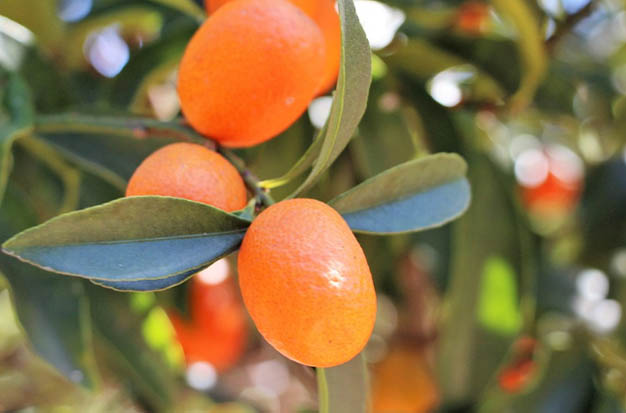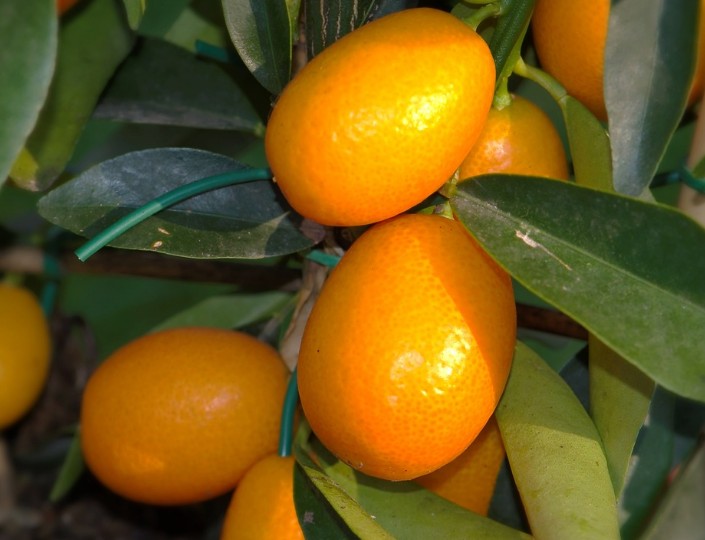
How Do You Eat Kumquat – Benefits of Eating Kumquat
Kumquats may be small, but they taste great and are packed with essential nutrients. But many people don’t know how to eat a kumquat. Learn more about including this tiny citrus fruit in your diet by reading on.
How To Eat Kumquats
Like grapes or kiwi berries, kumquats can be consumed whole. If you don’t want to, there’s no requirement to cut them in half. Avoid peeling them because the skin is very sweet and possibly the best part! Squeeze out the slightly tart juice if you don’t like it, and then consume the remaining fruit. Be sure to wash the fruit under cool running water before eating since the skin is edible.
The small fruits known as kumquats resemble miniature oranges, but unlike oranges, they are consumed whole, peel and all. The peel tastes sweet and aromatic and is nutrient-rich. Although they can be consumed whole, thoroughly wash and dry them before eating. Roll the fruit between your fingers a few times before eating it to get the most enjoyment possible. As a result, the kumquat’s bitter flavor is lessened and the skin becomes softer and releases sweet aromas. Even though the seeds are edible, you can remove them with a knife by cutting the fruit in half.
What Is Kumquat
Kumquats are a native citrus fruit of China that resemble tangerines or oranges but are consumed very differently. Kumquats are about the size of an egg, measuring about an inch long by an inch and a half wide, resembling large grapes or olives.
The most popular variety of kumquats in the US is the Nagami, which is a tiny, oblong, bright orange citrus fruit with a rather thick skin for its size. When eaten alone, they have a slight sweetness, but when combined, they have a very sour flavor. Another variety of kumquats is the Meiwa variety, which is more spherical, has thinner skin, and is sweeter. I cultivate Nagami kumquats, which are sweet and tart in equal measure.
Why Are Kumquats So Beneficial To Health?
Despite only having 13 calories, one kumquat can supply up to 14% of the daily recommended amount of vitamin C. Additionally, they’re a good source of calcium, manganese, and vitamin A. Kumquats have more soluble fiber than the average piece of fresh fruit because you eat the skin and the seeds, which can lower cholesterol and blood pressure. Since kumquats contain 80% water, they are very hydrating and a great choice for a snack on a warm day.
Kumquats are a true superfood with many health advantages and are a small but mighty fruit. This tiny fruit contains a lot of vitamins, minerals, and fiber.
Kumquats have twice as much vitamin C as oranges, which may be hard for you to believe. Due to their antioxidant properties, they aid in boosting the immune system and shielding cells from free radicals. Kumquats’ high calcium content is another factor contributing to their good health. Calcium is beneficial for teeth and bones, but it also promotes metabolism and digestion.
Any environment where other citrus grow is a good fit for them. However, they are actually tougher than oranges. If you want to plant a kumquat, it is much better to find a grafted sapling or tree at a nearby nursery because they don’t really grow well from seed.
If you already have other citrus plants growing in your backyard, the kumquat tree will be a great addition.

Where Can I Get A Kumquat?
Kumquats have the same sweet-tart flavor as other citrus fruits like tangerines, oranges, grapefruit, and lemons, as you might expect. The skin, which is thinner than the majority of other citrus varieties and pith-free, does contain a significant amount of sugar, though. The flesh and juice are extremely tart, while the skin is sweet.
When you bite into them, a burst of tart, sour juice, similar to that of a sour orange but not as tart as that of a lemon or lime, is what you first experience. A strong citrus flavor is unquestionable. The sweetness then enters as you continue to eat the peel, counteracting the sour. Although a little crunchy, the peel is very simple to consume. And the seeds, if you eat them, aren’t at all unpleasant; you can taste them, but they don’t have a bitter flavor.
Using Kumquats In The Kitchen
Kumquats are just as adaptable in the kitchen as oranges. They can be used in savory recipes as a fruity ingredient in salads or in sauces for lamb or poultry. They are an excellent, nutritious addition to desserts like fruit salad or ice cream because they are vitamin bombs. Kumquat compote, chutney, and candied kumquats are a few additional kumquat recipes. Cheese or meat pairs refreshingly with a sweet and sour kumquat chutney. Boil kumquats with apricots, carrots, onions, garlic, chillies, and a pinch of sugar until desired sweetness is achieved.
Kumquats go well with alcoholic beverages too. 500 grams of kumquats and 500 grams of sugar are combined to make a straightforward liqueur. Cinnamon, vanilla, and cloves may be added, if preferred. Over this mixture, pour cognac or brandy. It will be ready in two weeks, at which point you can sip some delectable kumquat liqueur.
Kumquat syrup is a different common application of the fruit. To prepare it, just combine 250 grams of kumquat with 600 grams of sugar and six tablespoons of lemon juice in a pot.
Tips For Buying And Eating Kumquats
Kumquats should be bright orange in color. They should have skin that is fragrant, firm to the touch, and free of soft spots.
Kumquats can be used in a variety of recipes as well as on their own as a healthy snack or addition to a festive cheese board. Utilize them the same way you would oranges or lemons by simply considering them to be a different variety of citrus. This fruit produces a tasty Kumquat Marmalade because the seeds are very pectin-rich. At a party, serve hydrating Kumquat Margaritas. Or prepare a Kumquat Refrigerator Pie to make the gloomy winter months more bearable!





Average Rating